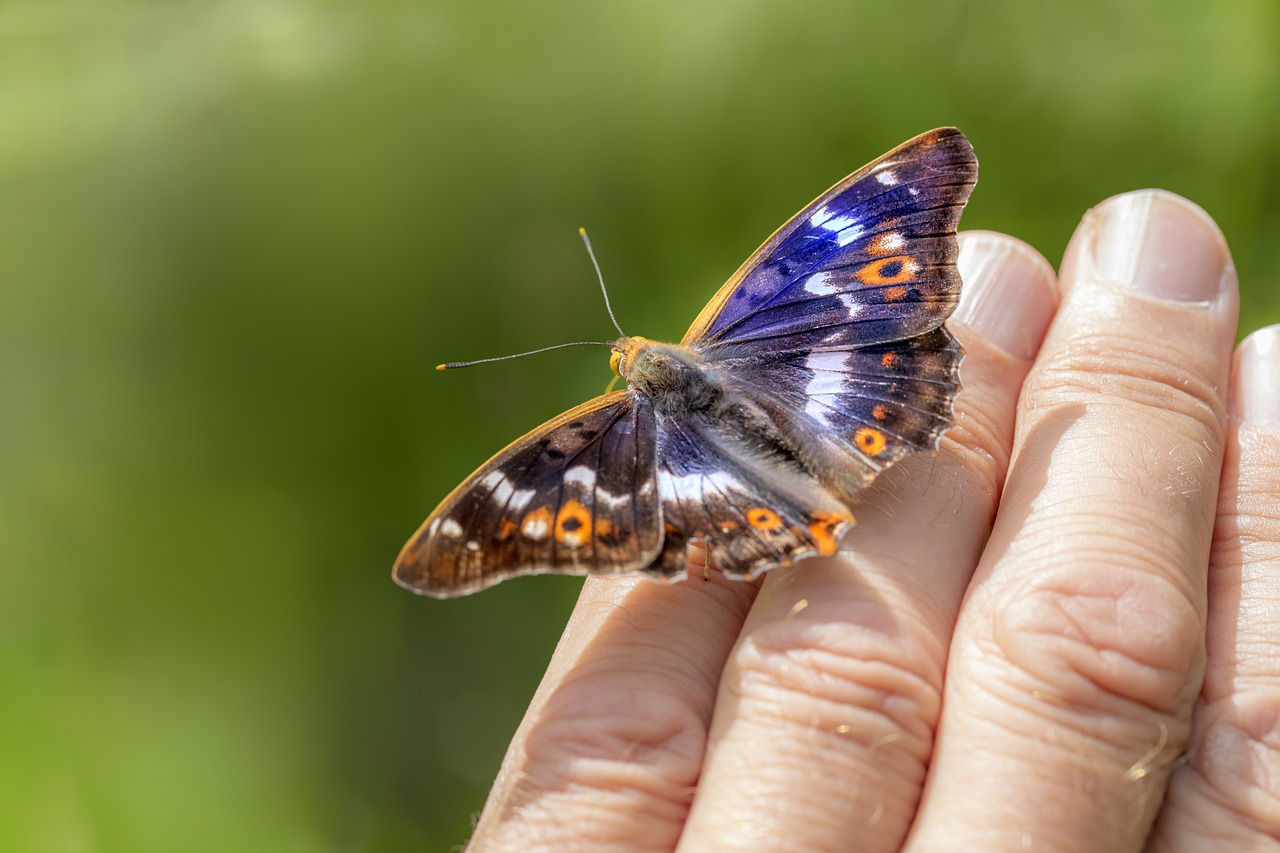The Lesser Purple Emperor (Apatura ilia) is a butterfly species belonging to the Nymphalidae family, known for its striking appearance and elusive nature. Here are some key features and characteristics of the Lesser Purple Emperor:
- Appearance: The Lesser Purple Emperor is a medium to large-sized butterfly with wingspan typically ranging from 60 to 70 millimeters (about 2.4 to 2.8 inches). It exhibits sexual dimorphism, with males and females having different coloration. Males have deep purple or violet-blue upperwings with a distinctive white band, while females are brown with orange patches and white bands. Both sexes have orange eyespots on the hindwings.
- Distribution: The Lesser Purple Emperor is found in parts of Europe and Asia, including countries such as Germany, France, Italy, Spain, Turkey, and parts of Russia. It inhabits deciduous woodlands, particularly those with mature oak trees, which serve as its primary habitat.
- Lifecycle: Like other butterflies, the Lesser Purple Emperor undergoes complete metamorphosis, progressing through egg, larva (caterpillar), pupa (chrysalis), and adult stages. The caterpillars feed on the leaves of various host plants, including willows (Salix species) and poplars (Populus species). Adults feed on sap, rotting fruit, and other organic matter.
- Behavior: Lesser Purple Emperors are generally solitary and spend much of their time in the tree canopy, where they are difficult to observe. Males are known to perch on branches or in sunny spots, occasionally descending to the ground to feed or investigate potential mates. They are strong fliers and may patrol their territories to defend against rivals and search for females.
- Mating and Reproduction: During the breeding season, males actively seek out females for mating, often engaging in aerial pursuits or perching in prominent locations to attract mates. After mating, females lay their eggs on host plants, where the caterpillars hatch and begin feeding.
- Conservation: The Lesser Purple Emperor is not considered globally threatened, but its populations may be declining in some regions due to habitat loss and degradation. Conservation efforts focus on preserving and restoring mature deciduous woodlands, which are essential for the butterfly’s survival.
Overall, the Lesser Purple Emperor is a captivating and elusive butterfly species, valued for its beauty and ecological importance in wooded habitats across its range.
Views: 13
Subscribe to the newsletter:
